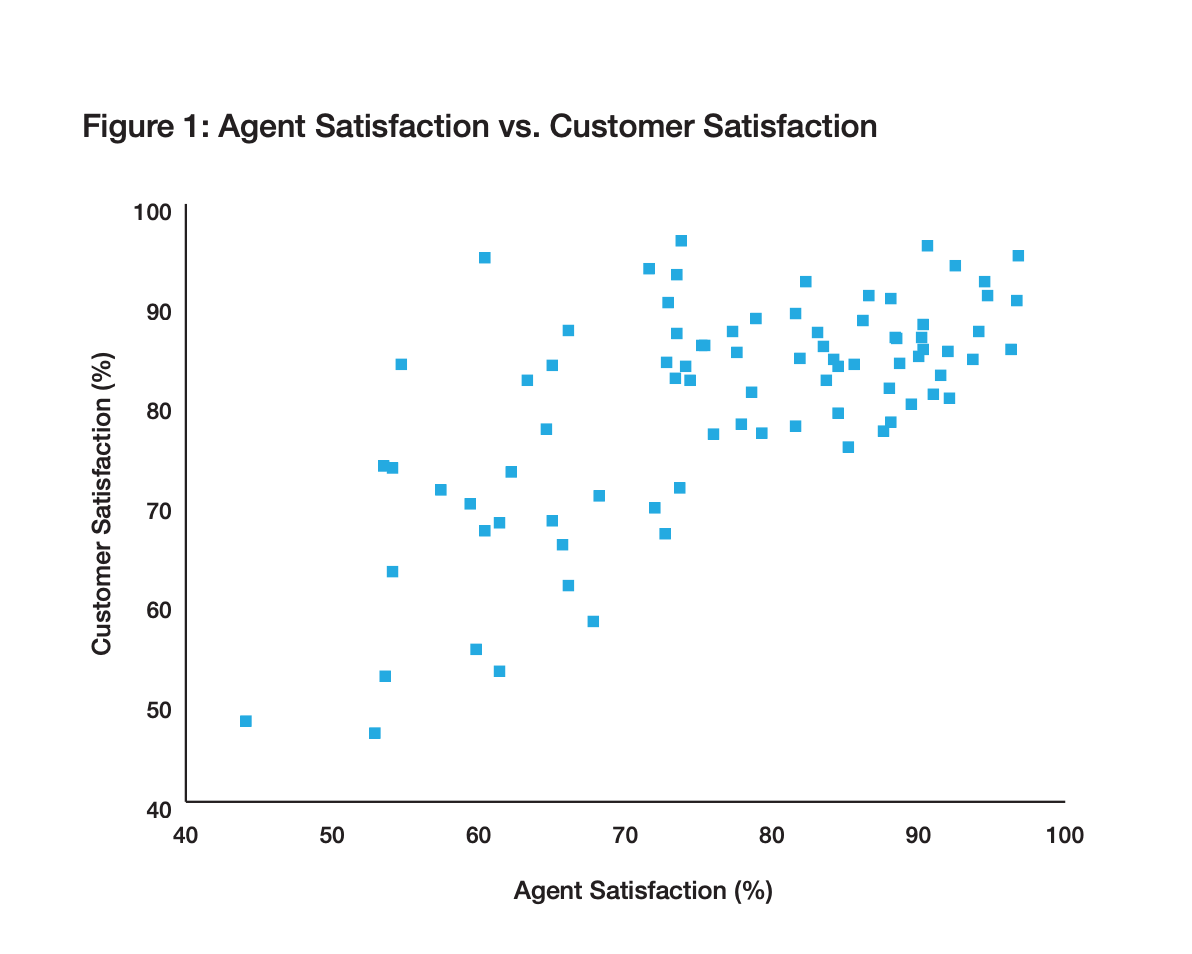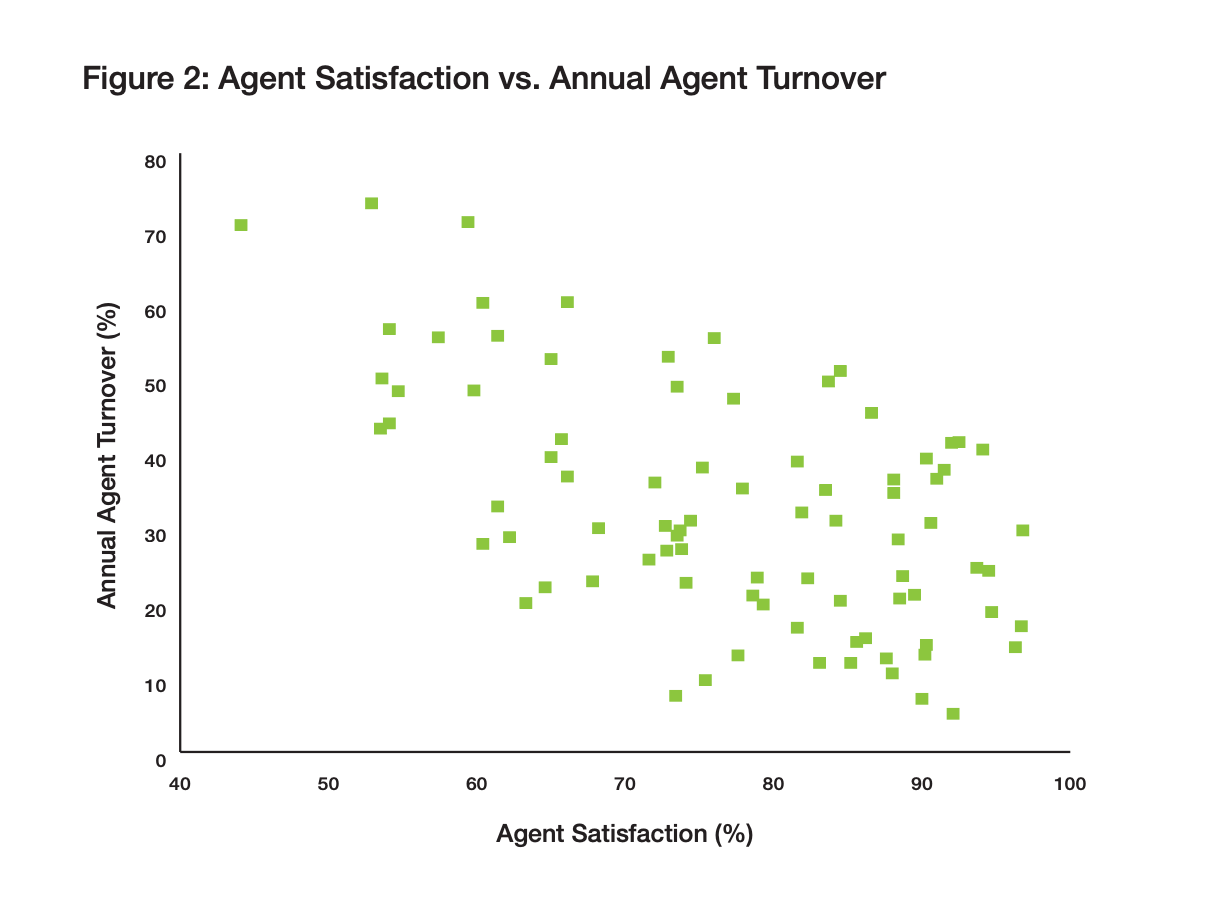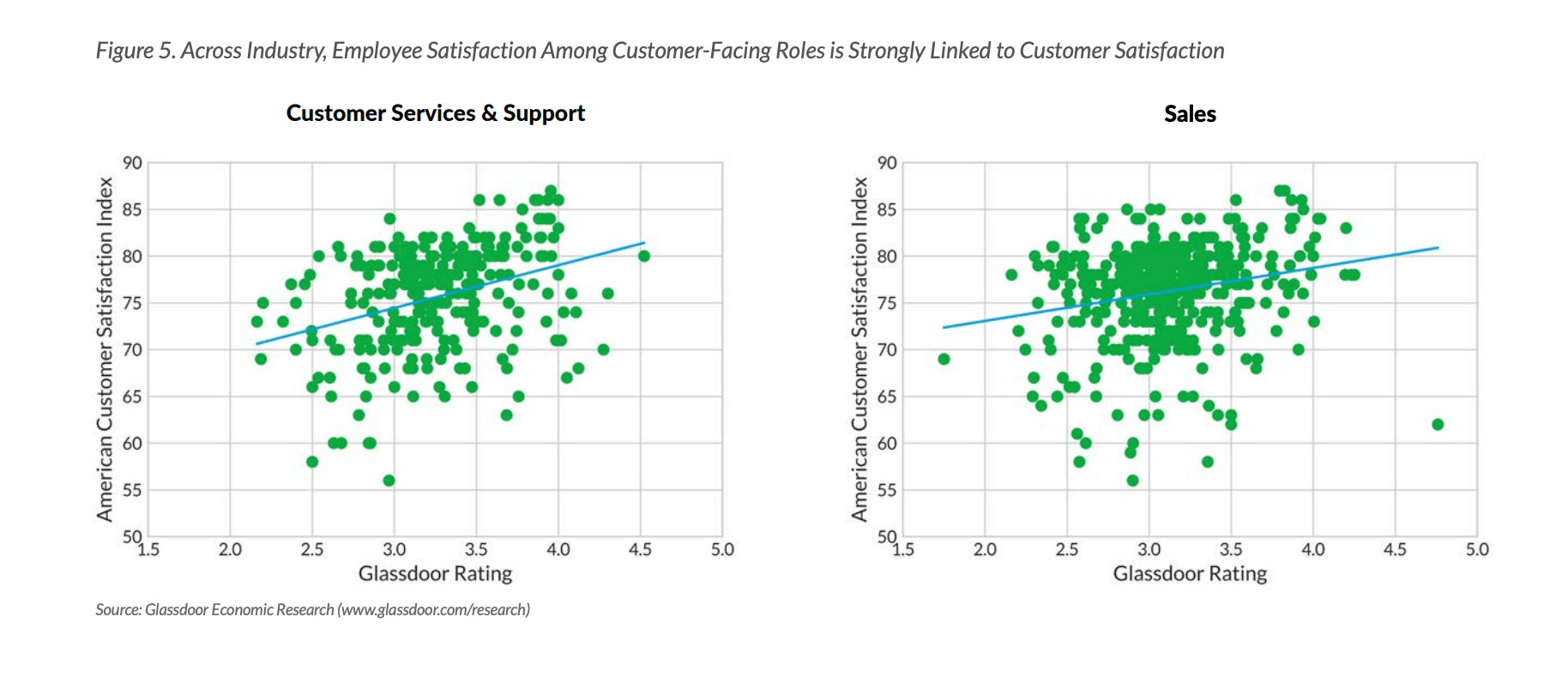
Agent Satisfaction May Be The Most Important Metric You're Not Tracking
Newsflash: You might be tracking the wrong metrics in your contact center.
Leaders, like you, use metrics to keep tabs on operational efficiency and get an inside look at customer satisfaction. As you track customer interactions, data piles up to help you monitor your contact center’s performance and discover customer sentiment. And once you gather all your intel, you have direction to understand the story your metrics tell, so you can make changes to improve your customer service.
[Download Now] 9 facts to build a business case for a better agent experience
Turns out, though, there’s a blank page in many contact center stories. According to SOCAP, contact center leaders tend to track these four popular metrics:
1. Customer satisfaction score (57%)
2. First call resolution (47%)
3. Abandon rate (39 %)
4. Service level adherence (33%)
But, there’s a critical metric missing from the list. Agent satisfaction. By now we all have the same mantra burned into our brains: happy agents make happy customers. So why aren’t we measuring the satisfaction of every call center employee?
[Read Next] Happy agents make happy customers
You can’t improve what you don’t measure, so leaving this KPI off your priority lists means you miss out on a core component of boosting CSAT – improving agent job satisfaction, first.
What’s more? Improving agent satisfaction can ultimately boost all your other metrics. But despite its importance, too many contact centers aren’t tracking it.
We’re serving up some data-backed proof on just how important agent satisfaction is to your contact center’s success. Let’s talk through how (and why!) to measure your agent’s satisfaction, so you can crunch the right numbers to inspire change in your contact center.
The Connection Between Agent Satisfaction and Customer Satisfaction
It isn’t a new idea that happy agents mean happy customers. In fact, I can find articles dating back to 2011 talking about how important it is to measure call center employee satisfaction. But a decade later, only about 30% of contact centers are actually tracking their employees’ satisfaction & engagement.
According to MetricNet, agent satisfaction has a direct impact on customer satisfaction, agent turnover, and daily agent absenteeism. Pair that, then, with the added impact high turnover and agent absenteeism have on dozens of your other favorite KPIs, and the importance of agent satisfaction grows exponentially.
The connection between customers and your agents is clear.
See for yourself. MetricNet maps it out in the graph below.

Then there’s the equally-glaring connection between agent satisfaction and a few of the top agent productivity metrics most contact centers track. The higher your agents’ satisfaction, the lower your turnover and absenteeism.


And more recently, research out of Glassdoor collected over an 11-year time frame further explains the connection between CSAT and employee happiness. Glassdoor’s research measured employee sentiment in connection with a company’s ranking on the ACSI index. They found for every 1% increase in a company’s rating on Glassdoor, the company also saw a 1.3% bump in their customer satisfaction scores according to ACSI.
“Overall, we find that having a more satisfied workforce is clearly associated with companies’ ability to deliver better customer satisfaction.”
– Happy Employees, Satisfied Customers: The Link Between Glassdoor Reviews and Customer Satisfaction

Not only that but, Glassdoor’s research found an even stronger correlation between employee and customer sentiment in industries with more interactions between customers and frontline employees. Industries like retail and hospitality where customers spend more time chatting with employees saw greater positive impacts of happy employees reflected in their CSAT scores.
These impactful connections prove how crucial agent satisfaction is to your contact center’s success. And, when you measure it, you can draw conclusions to help you pinpoint limitations in other avenues of your customer service machine, too.
[Read Next] How to measure customer satisfaction & 5 other confusing metrics
When you have a number of metrics dipping below the norm, it makes sense that your call center employee satisfaction and all its influence just might be the source of the problem. But you’ll never know for sure unless you measure it.
How To Measure Contact Center Employee Satisfaction
Agent satisfaction measures the percentage of your agents that are either satisfied or highly satisfied with their jobs. Pretty simple, right?
How to calculate agent satisfaction:
To get a grip on agent satisfaction, you can combine a few different methods, both qualitative and quantitative, to get a more informed picture of your agents’ experience at work. Then, you can capture the feelings of your agents and still have hard numbers to back them up.
Method one:
Use agent satisfaction surveys to help quantify agent sentiment. Send out anonymous pulse-check surveys with questions on work conditions, team fit, overall workload, and recognition to your team on a regular basis. And, supplement these quick surveys with a longer survey and more in-depth questions once or twice a year.
Ask your agents questions like “how excited are you to come to work each day?” And, “how challenged do you feel in your role?” Maybe even, “do you enjoy spending time with your teammates?” Then, your agents give each answer a score on a scale from 1-5.
So, if you ask the question “How excited are you to come to work each day,” your agent drags a little lever to the left or right, declaring just how excited they are. (Let’s say 1 = I barely made it out of bed this morning. And 5 = I jumped out of bed and got here early to start the day). You can find an example survey over here.
As you calculate survey scores, keep other agent-first metrics, like training investment per agent, transfer rate, and eNPS in mind, too. These numbers will help you understand what pieces of your agent’s experience are broken and how it’s impacting their happiness.
How to calculate your survey scores:
First, add up the number of responses you get from your agent. Then, add all those individual question ratings to get one sum. Once you have the sum of all an agent’s ratings, you divide that sum by the total number of responses they submitted. Whatever number you get here, you divide by the ideal perfect score. So, on your 1-5 scale, 5 would be the ideal perfect score for every question.
Average statement rating = # of responses/total sum of statement ratings.
Percent score = Average rating of statement/total possible rating
Example:
# of responses= 10
Ratings received: 4, 2, 4, 2, 5, 1, 3, 2, 4, 3
Sum of rating = 30
Average rating = 30/10 = 3
Percent score = 3/5 = .6 = 60%
A quick industry snapshot: In contact centers in the U.S., only 38% of agents are highly satisfied and 43% are somewhat satisfied.
Method two:
Oh, the 1:1 conversation we all know and love. This is a safe space to talk about your agents’ feelings and get insight into their experience on the job. You can ask open-ended questions here to get context to pair with your hard numbers.
[Download Now] Need help kicking off the convo? Try these 52 questions.
Method three:
Hold exit interviews and stay interviews with each of your agents. These longer conversations offer up an opportunity to go in-depth about the pains and highlights of your agents’ jobs.
How To Improve Call Center Employee Satisfaction
Act on the information you find. If your agents’ satisfaction is low, dig into why. Then, develop initiatives to improve it. Don’t worry – it doesn’t take bigger paychecks, bonuses, or more vacation days to make agents happy.
The MetricNet research found more (and better) training is foundational to improving agent satisfaction. And, tons of reports out of Gallup found the same thing. When you invest more hours and budget into employee training, you ward off burnout and negative customer outcomes because your agents feel valued and empowered to do better work. That’s right, agents are more satisfied with their job when they have opportunities to be a better employee and a better resource for customers.
[Learn More] Engage your team with training and tools built with agents in mind
Making a business case for change
If you’re one of the 61% of contact center managers who believe your team can benefit from more training and ample resources, measure agent satisfaction. It’s a powerful tool to inspire change.
The data provided by the surveys, your collection of feedback from your agents, and the correlation between customer satisfaction and low agent satisfaction, make a strong business case for building a better agent experience.
Agent satisfaction is the secret to long-term success
Contact centers use data to pinpoint important connections and trends to improve performance. However, without understanding the role of the agent in the equation, you’re trying to finish a puzzle with a box that never had all the pieces.
Measuring agent satisfaction gives you a true 360-degree view of your contact center. And, when you incorporate agent satisfaction into the mix of your other metrics, you can make impactful changes that lead to long-term improvements in customer satisfaction and your bottom line.
[Download Now] 9 facts to build a business case for a better agent experience
We originally published this post on January 21, 2017 and we updated it for new insight on November 11, 2020.

